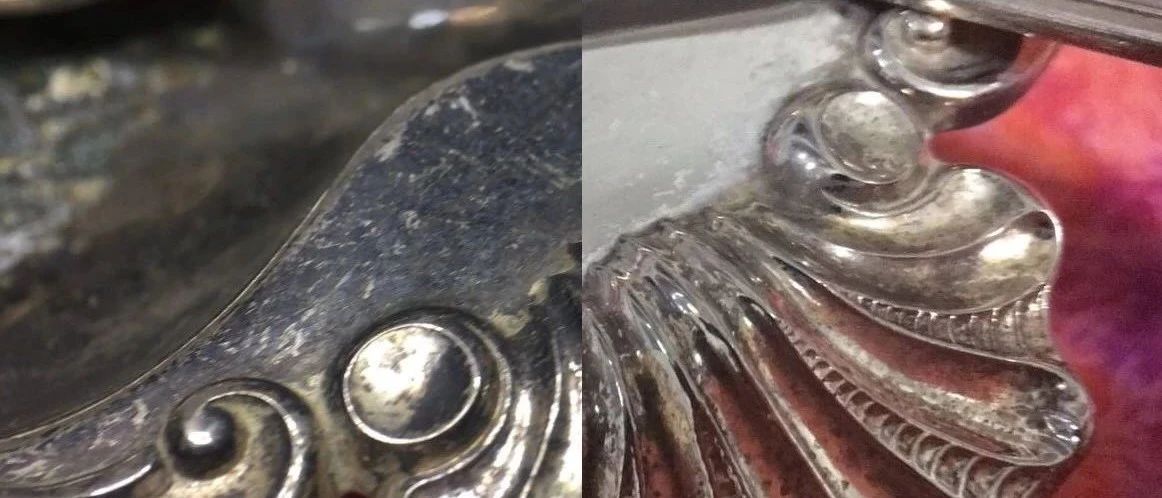
Turn white in an instant! Simple operation brings old silverware back to life.
It's time to exert the power of chemistry.
can old silverware as black as briquettes recover quickly? Click on the video and witness the moment of its transformation:
Why does silverware turn black?
the main reason for blackening silverware is the silver sulfide formed on the surface, which is the product of the reaction of metallic silver with sulfides (such as hydrogen sulfide) in the surrounding atmosphere. When the content of sulphide in the surrounding environment is high and the environment is humid, the rate of blackening of silverware will be accelerated.
although most people do not have such a need, here is a way to quickly blacken silverware: encapsulate polished silverware in a small box with a few slices of hot boiled eggs. This allows silverware to turn black quickly within an hour. Hard-boiled egg white releases some hydrogen sulfide gas and provides a moist environment, coupled with a freshly polished metallic silver surface, which greatly speeds up the reaction.
(silver-plated spoons destroyed by eggs are very evenly black)
in order to make the demonstration obvious, we usually try to make the silverware darker when doing this demonstration. In many places, experimenters are advised to stick things like mustard, mayonnaise and rubber bands on silverware, and they also want the sulfides to react with silverware. Among these suggestions, I have only tried mayonnaise, but the effect is not good at all. it is much worse than boiled eggs.
use chemical cleaning silver
To bring out the best in your unique feminist nature, boho wedding dresses online is exactly what it will take. Whatever your choice, take advantage of a huge discount of 70 percents!
in addition to directly polishing the surface, silverware can also be brightened with several very home materials. Here, aluminum foil is the key reducing agent, which is responsible for reducing silver sulfide, re-forming metallic silver on the surface of silverware, and making silverware fade black.
Scald, salt and alkaline environment are the conditions for the smooth occurrence of the reaction. In a salt solution, aluminum foil and silverware in contact with each other form a primary battery, and the alkaline environment helps remove oxides and hydroxides from the aluminum foil surface. (supplement: this statement is indeed mentioned in many places, but there is no in-depth discussion. There's nothing wrong with it in theory, but I haven't tested how different it is in practice), while Scald makes the response happen faster. In the reaction, there will be a small amount of hydrogen and hydrogen sulfide gas, if the silverware is large and blackened seriously, you can smell the obvious "rotten egg smell".
(comparison before and after cleaning)
in theory, this is a "more silver-saving" treatment: the blackened part is not directly polished and removed, but is changed back to metallic silver. However, even so, the newly generated silver is still unable to restore the same surface structure as the original, nor can it automatically achieve a polishing effect.
(microstructure of silverware surface after electrochemical reduction treatment (scanning electron microscope), Teresa Palomar et al)
you can also try this method to clean silver ornaments at home, but valuable silverware should be treated with caution.
Safety Tip:
Please operate in the ventilated place.
in order to avoid skin irritation and scald, do not come into direct contact with the solution used for cleaning.